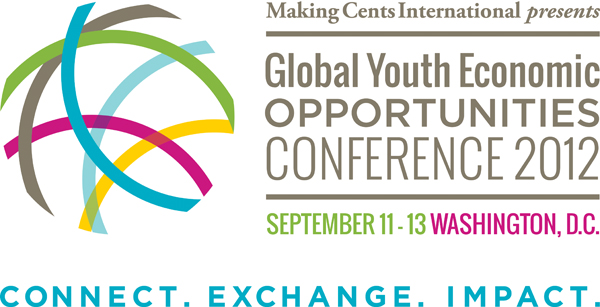Youth Economic Opportunities Conference: Working Together to Create Enabling Environments for Youth
2012 Youth Economic Opportunities Conference: Blog #7
 September 11-13, 2012 | Washington, DC
September 11-13, 2012 | Washington, DC
This blog post was written by Branka Minic, the Director of Global Corporate Affairs at Manpower. She will be speaking at the Global Youth Economic Opportunities Conference on Wednesday, September 12, within the workforce development track.
Working together to create enabling environments for youth
One thing I think we’re all familiar with as practitioners is the sheer task of building new projects from scratch in new locations and for new populations. We confront, over and over again, the same challenges of identifying promising employers, of educating businesses and securing hiring commitments, of building service coalitions to meet all the varying support needs of young people. We’ve got good ideas, proven concepts, effective models...but the task of scaling and replicating them remains a slow and uncertain process.
And yet the current state of youth unemployment around the globe makes it incredibly urgent for us to accomplish just this sort of scaling. We have to find ways to impact young people not in tens, hundreds, or thousands but in millions. We have to build consensus around proven practices and strategic approaches that will get key stakeholders, especially governments, educators, and employers, on board and aligned with national-scale programs.
Over the past few months, ManpowerGroup has been engaged in an extensive consultation process, including meetings and interviews with more than 50 leading academics and practitioners in the youth employment field, in order to identify the best and most helpful ideas for getting a “bigger bang” out of youth employability programs. We’ve zeroed in on the concept of “enabling environments” – economic and policy frameworks, information resources, civil society infrastructure, and strategic fundamentals that can get a wide range of stakeholders working in harmony – that will help rapidly expand and mainstream high-impact solutions for youth.
What has this process taught us? We know that policy leadership has to come from governments, but governments are terrified, right now, of unsustainable fiscal commitments. So it is important to discover strategies that are cost-effective while still proven to generate impacts. We know that employers are increasingly grumbling about the quality of graduates and the need to provide supplemental training to new hires; they tend to feel it is someone else’s responsibility to provide them with a skilled workforce. So we need to draw employers into much more pro-active skills and hiring partnerships with the education system, where they take more responsibility for shaping skills development but in a context of shared cost and effort. We know that young people themselves need to become more savvy about their economic options, about acquiring economically-relevant skills, and about successfully managing the job-search and hiring process. So programs need to teach them a set of second-order career-navigation skills instead of just helping them into first jobs.
We’ve written up our preliminary findings in a new report entitled Creating Enabling Environments: How Policymakers Can Boost Youth Employment, which we are releasing at the Global Youth Economic Opportunities Conference, on Wednesday September 12.
We hope this study will be a platform for focused discussions with governments, educators, practitioners, and other key stakeholders, and stimulate shared efforts to create new, high-impact partnership initiatives We look forward to discussing the study and exchanging ideas with our colleagues at the Global Youth Economic Opportunities Conference and in other forums.


